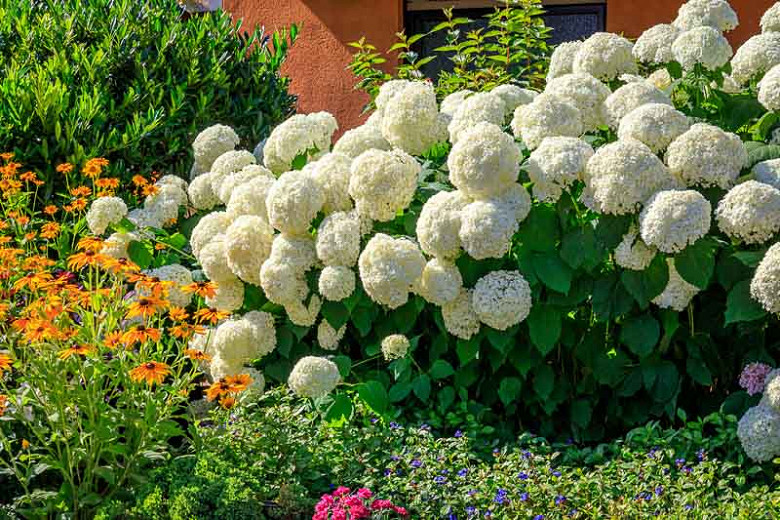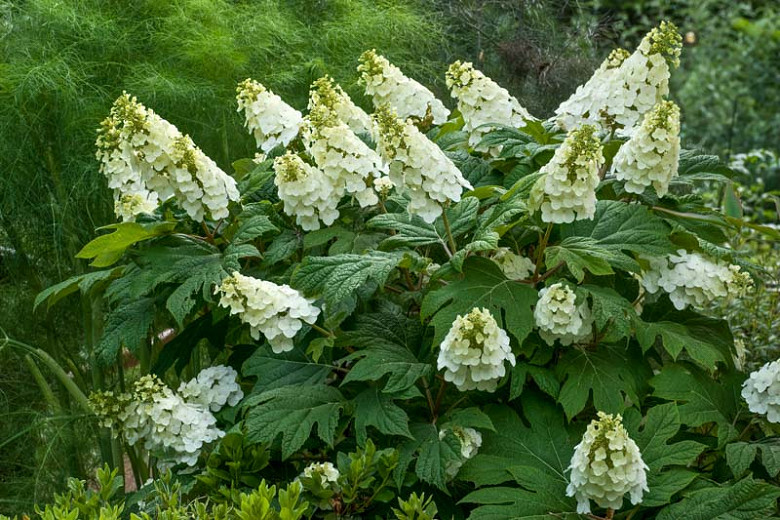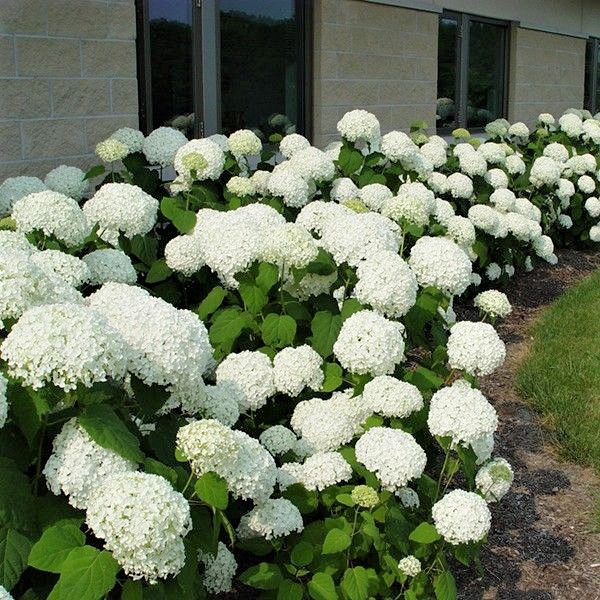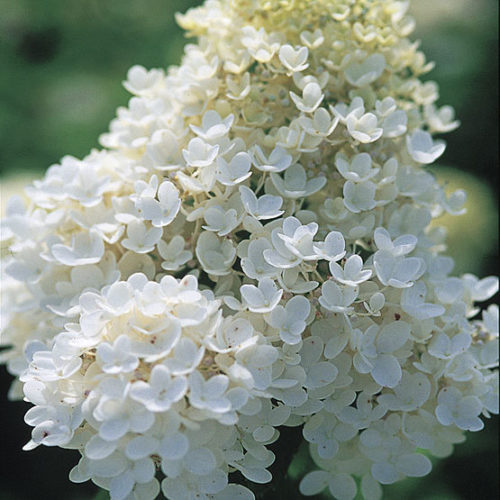Hydrangeas: The Showstopping Blooms That Will
Hydrangeas: The Show-Stopping Blooms That Will Wow Your Garden
Hydrangeas are one of the most popular flowering shrubs in the world, and for good reason. They come in a wide variety of colors, sizes, and shapes, and they bloom for months on end. Whether you're looking for a small, compact shrub for your patio or a large, stately specimen for your garden, there's a hydrangea out there for you.
In this blog post, we'll take a closer look at hydrangeas, including their different types, colors, and care requirements. We'll also share some tips on how to get the most out of your hydrangeas.
What Are Hydrangeas?
Hydrangeas are flowering shrubs that are native to Asia, Europe, and North America. They belong to the Hydrangeaceae family, which also includes hortensias, snowbells, and mock oranges.
Hydrangeas are known for their large, showy blooms. The flowers can be white, pink, blue, purple, or even green. The color of the flowers depends on the acidity of the soil. In alkaline soils, the flowers will be blue or pink. In acidic soils, the flowers will be blue or purple.
Hydrangeas are also known for their long blooming period. They typically bloom from early summer to late fall.
Different Types of Hydrangeas
There are many different types of hydrangeas, but the most common are:
- Bigleaf hydrangeas (Hydrangea macrophylla): These are the most popular type of hydrangea. They have large, round flower clusters that can be up to 12 inches in diameter. Bigleaf hydrangeas come in a variety of colors, including white, pink, blue, and purple.

- Smooth hydrangeas (Hydrangea arborescens): These hydrangeas are smaller than bigleaf hydrangeas, but they are just as beautiful. They have flat, lacecap flowers that are white or pink. Smooth hydrangeas are a good choice for small gardens or patios.

- Panicle hydrangeas (Hydrangea paniculata): These hydrangeas have large, cone-shaped flower clusters. They come in a variety of colors, including white, pink, and blue. Panicle hydrangeas are a good choice for larger gardens.

- Oakleaf hydrangeas (Hydrangea quercifolia): These hydrangeas have large, oak-shaped leaves and small, white or pink flowers. Oakleaf hydrangeas are a good choice for gardens with partial shade.

- Climbing hydrangeas (Hydrangea petiolaris): These hydrangeas are vines that can grow up to 30 feet long. They have white or pink flowers that bloom in late summer. Climbing hydrangeas are a good choice for covering walls or fences.

Hydrangea Colors
The color of hydrangea flowers is determined by the acidity of the soil. In alkaline soils, the flowers will be blue or pink. In acidic soils, the flowers will be blue or purple.
If you want to change the color of your hydrangea flowers, you can adjust the acidity of your soil. To make your soil more acidic, add peat moss or sulfur. To make your soil more alkaline, add lime.
Caring for Hydrangeas
Hydrangeas are relatively easy to care for. They need full sun to partial shade and well-draining soil. They should be watered regularly, especially during the summer months.
Hydrangeas need to be pruned in the spring. This will help to keep them healthy and encourage new growth.
Hydrangeas and Winter
Hydrangeas are hardy plants, but they can be damaged by cold weather. In cold winter climates, you may need to protect your hydrangeas with a layer of mulch.
Conclusion
Hydrangeas are beautiful and versatile plants that can add a touch of elegance to any garden. With proper care, they will provide you with years of enjoyment.
Are you looking for a beautiful and easy-to-care-for plant to add to your garden? Look no further than the hydrangea! These stunning flowers come in a variety of colors, including blue, pink, white, and purple. They are also relatively low-maintenance, making them a great choice for even the most inexperienced gardeners.
If you're interested in adding hydrangeas to your garden, I recommend visiting . This website offers a wide variety of hydrangea plants for sale, including bothpotted plantsandbare root plants. They also have a great selection of different varieties, so you're sure to find the perfect hydrangea for your needs.
In addition to their wide selection of hydrangea plants, also offers excellent customer service. Their team of experts is always happy to answer your questions and help you choose the right hydrangea for your garden.
So what are you waiting for? Visit today and start your journey to hydrangea gardening!
FAQ of hydrangea plants for sale
FAQs about Hydrangea Plants for Sale
1. What are the different types of hydrangea plants?
There are many different types of hydrangea plants, each with its own unique characteristics. Some of the most popular types include:
- Bigleaf hydrangeas (Hydrangea macrophylla): These are the most common type of hydrangea, and they are known for their large, showy flowers.
- Mophead hydrangeas (Hydrangea macrophylla var. macrophylla): These hydrangeas have large, round flower heads that resemble mops.
- Peegee hydrangeas (Hydrangea paniculata): These hydrangeas have tall, pyramidal flower clusters.
- Limelight hydrangeas (Hydrangea paniculata 'Limelight'): These hydrangeas have bright green flowers that turn white as they mature.
- Aspera hydrangeas (Hydrangea aspera): These hydrangeas have small, bell-shaped flowers that are borne in clusters.
2. When is the best time to plant hydrangeas?
The best time to plant hydrangeas is in early spring or early fall. This gives the plants time to establish themselves before the hot summer weather or the cold winter weather.
3. How do I care for hydrangeas?
Hydrangeas are relatively easy to care for. They need well-drained soil, regular water, and full sun or partial shade. They also benefit from being fertilized in the spring and fall.
4. What are some common problems with hydrangeas?
Some common problems with hydrangeas include:
- Leaf spot: This is a fungal disease that causes brown or black spots on the leaves.
- Pests: Hydrangeas can be susceptible to pests such as aphids, scale, and spider mites.
- Drought stress: Hydrangeas need regular water, so they can be susceptible to drought stress.
5. How do I change the color of my hydrangeas?
The color of hydrangea flowers is affected by the acidity of the soil. In alkaline soil, hydrangeas will bloom blue or pink. In acidic soil, they will bloom blue. To change the color of your hydrangeas, you can adjust the acidity of the soil.
Image of hydrangea plants for sale
5 different images of hydrangea plants for sale from Pinterest:
This is a popular variety of hydrangea that is known for its large, white flower heads. It is a hardy plant that can tolerate a wide range of conditions, making it a good choice for most gardens.
This variety of hydrangea is known for its long blooming period. The flowers can change color from blue to pink to purple, depending on the acidity of the soil.
This variety of hydrangea is known for its large, oak-shaped leaves. The flowers are typically blue or pink, but can also be white.
This variety of hydrangea is known for its cascading flowers. The flowers are typically white, but can also be pink or blue.
This variety of hydrangea is known for its bright blue flowers. It is a compact plant that is well-suited for smaller gardens.





Post a Comment for "Hydrangeas: The Showstopping Blooms That Will"